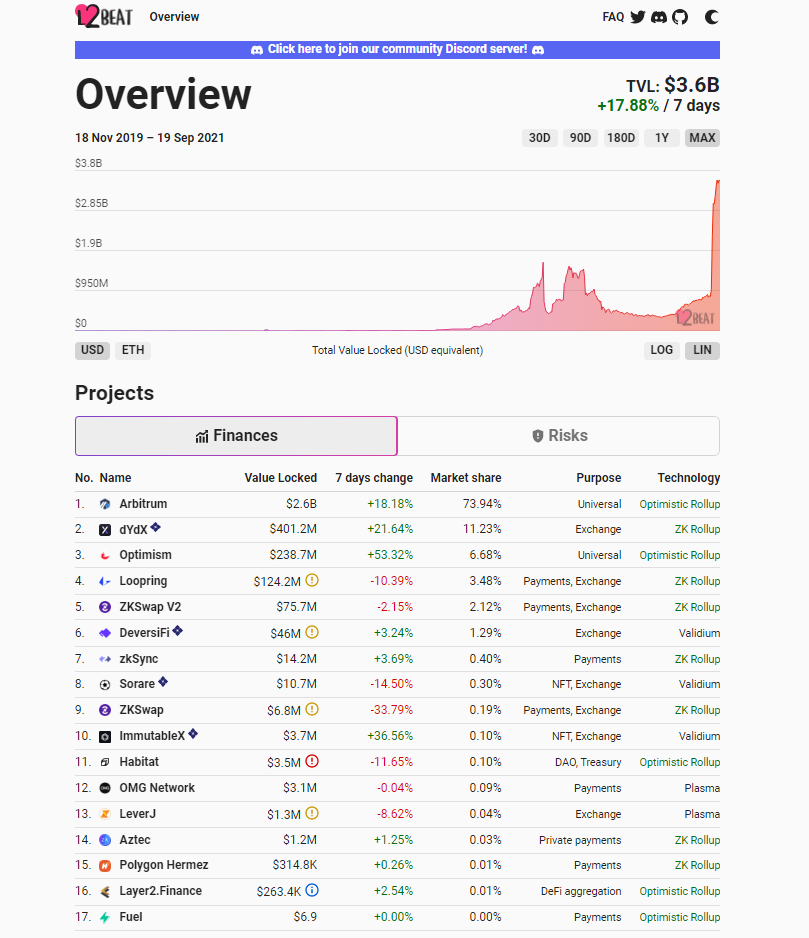Crypto Research
ROLLUPS - Ethereum Layer 2 solution explained
Sep 21, 2021
Blockchain scaling solutions are absolutely heating up. Many users are already enjoying an "improved Ethereum" by using Layer 2 solutions like Polygon. There are so many different Layer 2 scaling solutions currently out of the scene and competing with one another.
These solutions try to gain dominant market shares in this area. You may be thinking what the difference is between all of these different scaling solutions and which is the best. We're introducing one of the best blockchain scaling solutions out there right now and showing you what their similarities and differences are. Since the start of the Ethereum network, scaling Ethereum has been one of the most talked about topics. When it comes to scaling blockchains, there are generally two options:
• Scaling of the base layer (called Layer 1)
• Scaling the network by outsourcing some of the work to something else, for example a new layer (called Layer 2)
Layer 1 (L1) of Ethereum has a lot of problems, but many of them are solved with good Layer 2 solutions and scaling solutions. Therefore, layer 2 can mean making it more efficient. In this article, we will focus on rollups, which come in two different types. The most popular are ZK Rollup and Optimistic Rollup. The latter is the one that gains traction really quickly.
What is Optimistic Rollup (ORU)?
Optimistic Rollups allow us to publish transactions on the blockchain without actually executing them on Ethereum. Basically, with an optimistic rollup, we can get out of the main Ethereum chain, move onto this Layer 2 (L2) solution, and allow ourselves to make thousands of transactions without really having to worry about Gas prices.
Basically, Optimistic Rollup consists of merging a series of transactions into a single transaction and settling the eventual outcome back at the top of the Ethereum chain. It's a separate environment with its own validators that uses evidence of fraud and stores the data on Layer 1 Ethereum. So, Optimistic Rollups actually have their own optimistic virtual machine that enables them to do things with smart contracts. You can usually just take an application and port it to Layer two to develop a new ecosystem in that Layer two environment. The two largest projects that use Optimistic Rollups technology are Optimism and Arbitrum.
What is ZK Rolluo (ZKR)?
Zero-knowledge Rollups, also known as ZK Rollups, are much faster and more efficient rollups, but they cannot use smart contracts. This is one of the biggest differences between ZK Rollups and Optimistic Rollups. Compared to Optimistic Rollups, the actual technology for ZK Rollups is difficult to implement for a general purpose. ZK Rollups also leave behind a certain part of the transaction off-chain that is not central to the final consensus. ZK Rollups found a way to leave out some data that Optimistic Rollups can't leave out. In contrast to Optimistic Rollups, ZK Rollups do not assume that all transactions are good, but rather check each transaction. Solutions based on ZK Rollups can therefore have some significant competitive advantages over the OptimisticRrollup technology in terms of transaction speed.
The L2 ecosystem is growing exponentially. If you look at the graph below, the value locked into Layer 2 scaling solutions is approximately $ 3.6 billion at the time of writing. You can also see that Optimistic Rollup and ZK Rollup technology projects like Arbitrum, dYdX and Optimism (Top 3) have been growing at an insane pace since their inception. They also currently have the largest market share.

Source: https://l2beat.com/